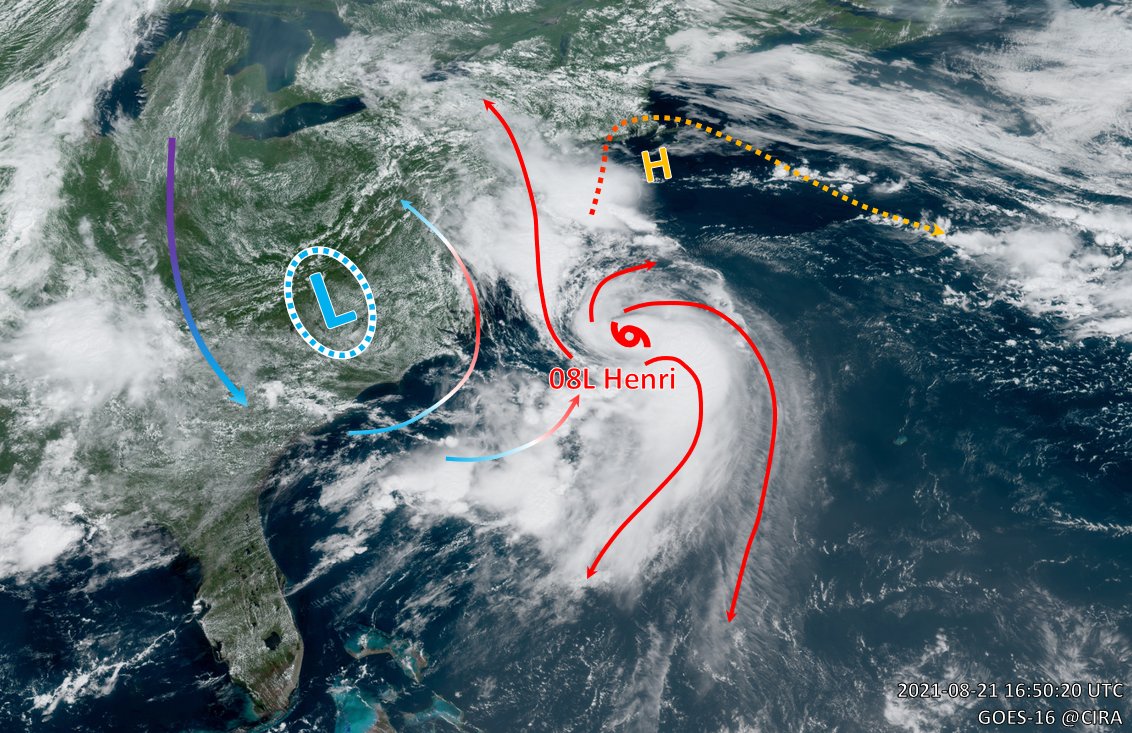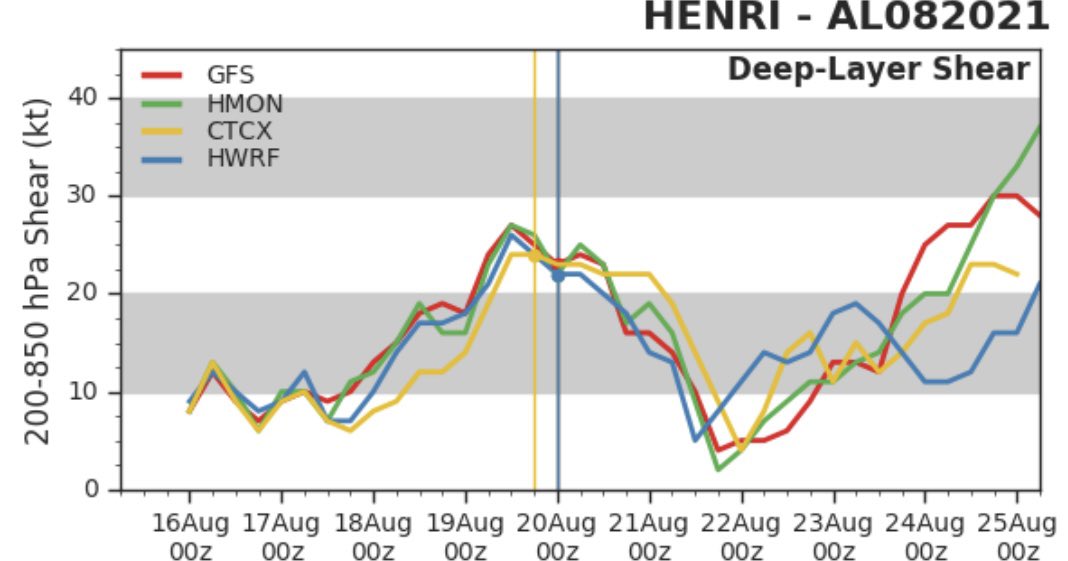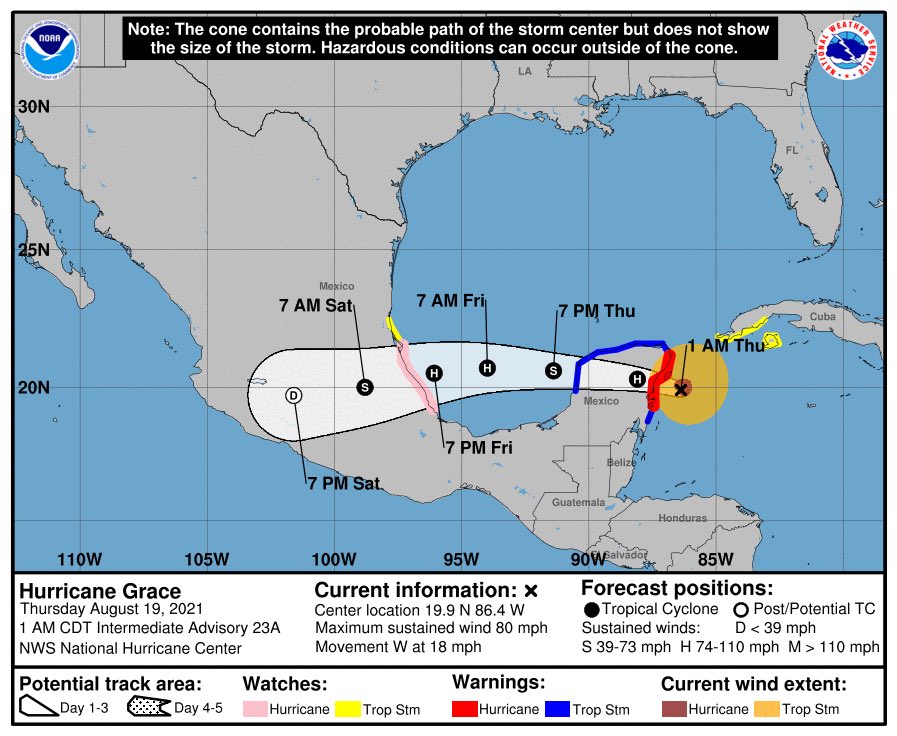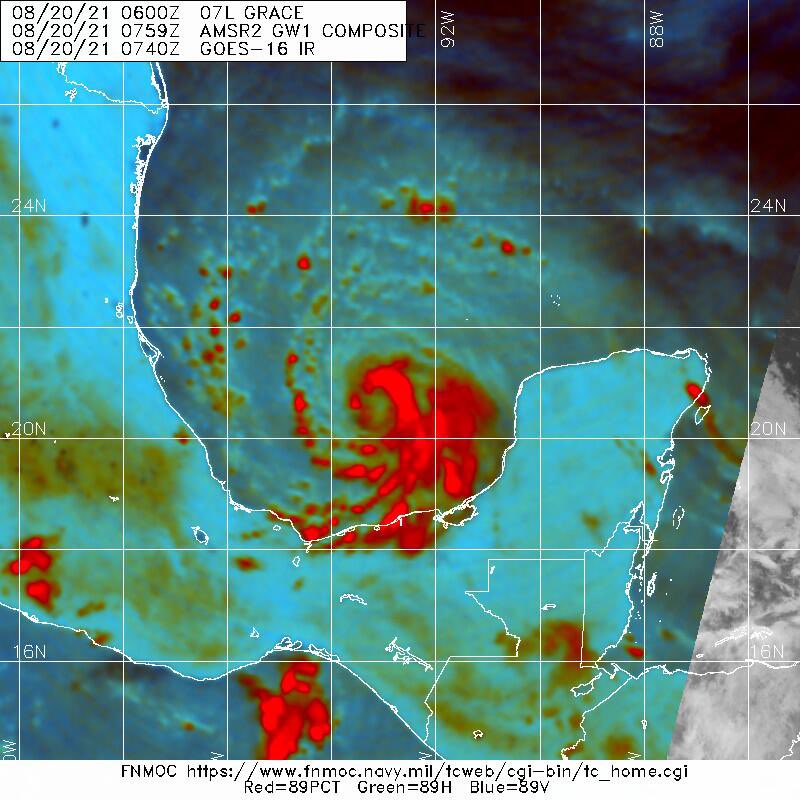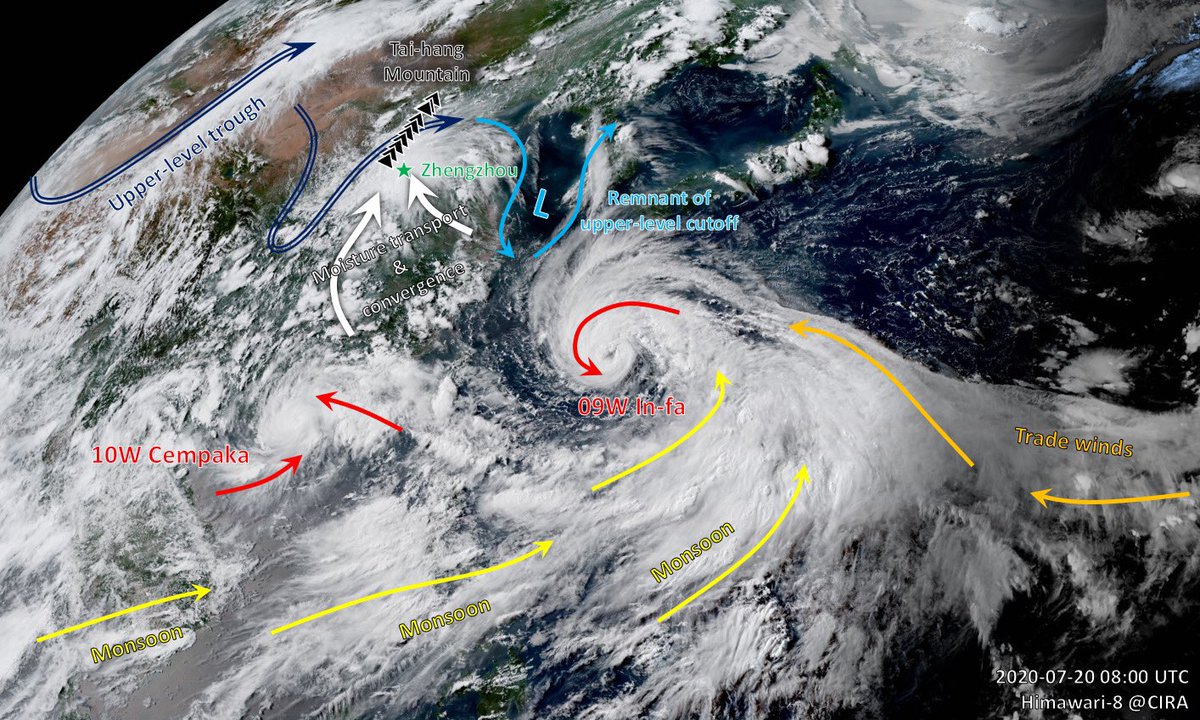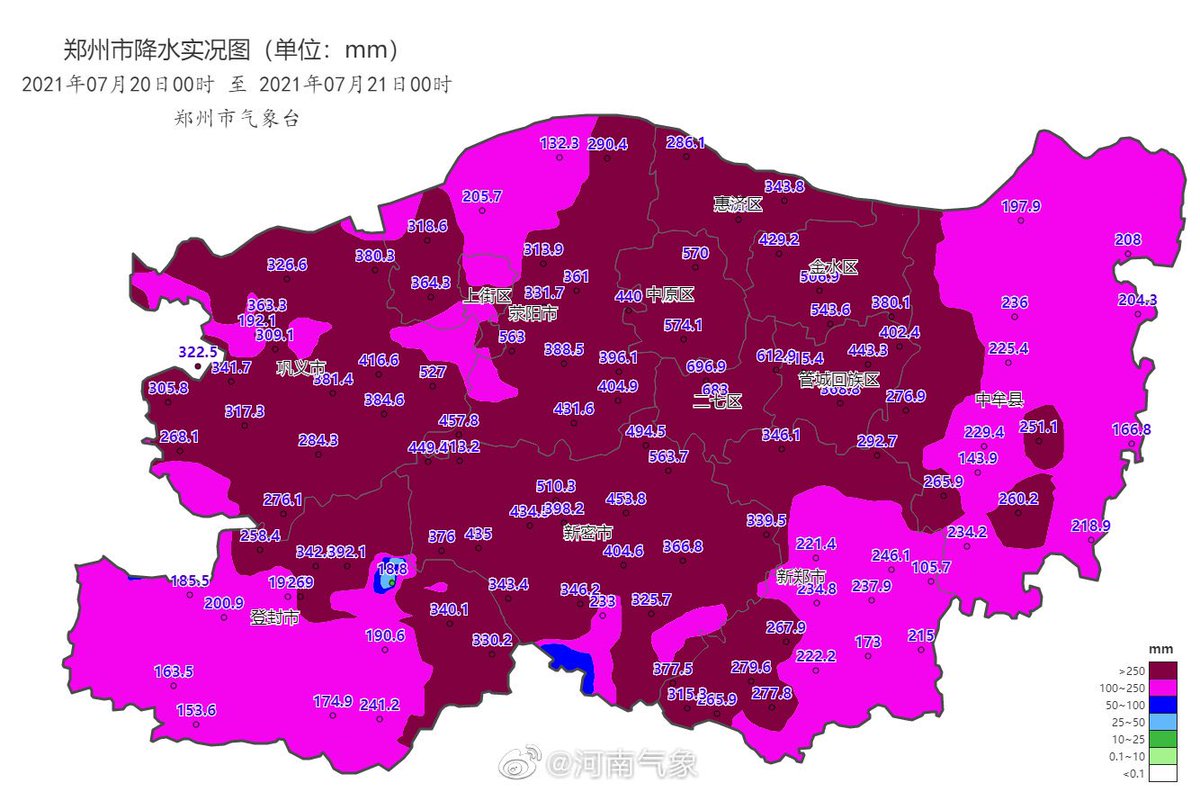
#Henri (learned today that it's not supposed to be pronounced as "Henry) currently still has its outflow blocked by upper-level NE winds. It can be seen from the loop that the low-level cloud curvatures are out to the NW while upper-level circulation center is tilted to the SE…
From the GFS forecast, it seems that the poleward outflow channel won't open up for #Henri until Friday PM hours and so is a window for faster intensification. 



In the miserable depiction by HWRF, #Henri will be sheared like a fool tonight… 👀 
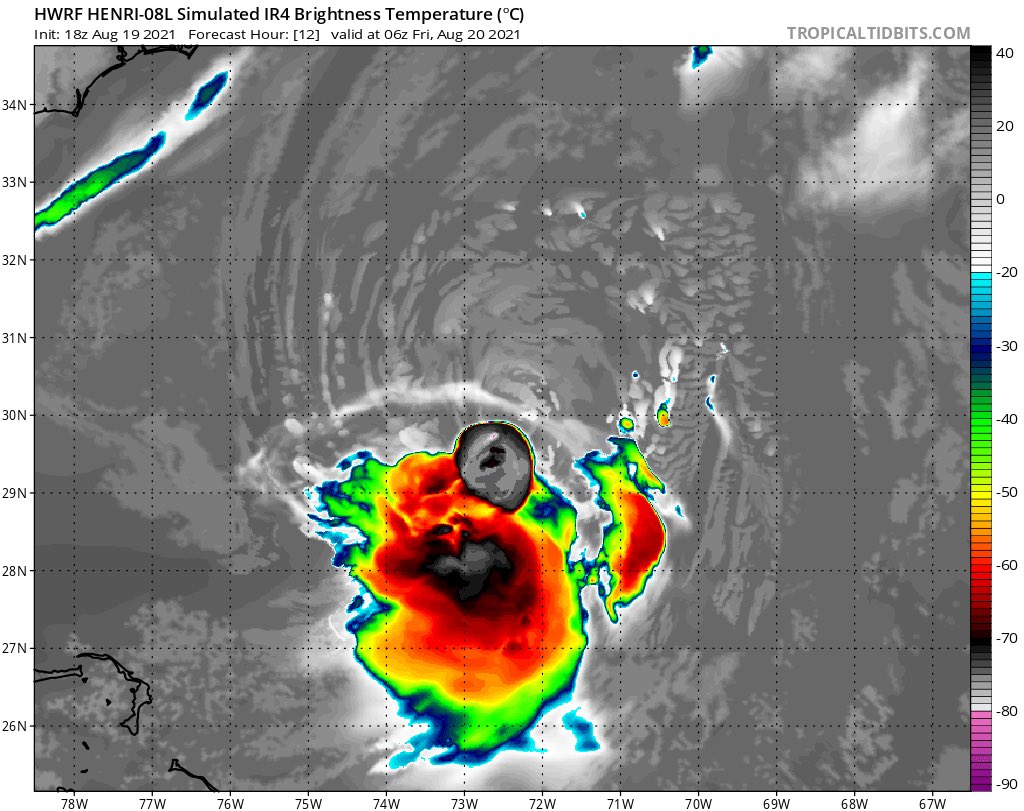
In the HWRF forecast by Friday evening, deep convection will start to wrap into the upshear left quadrant of #Henri as upper level SW winds starts to take hold of the storm 



Upon interacting with an upper-level cutoff, the long axis of #Henri's cloud shield will gradually turn into an east-west orientation and so is a potential erratic drift in track, as depicted by HWRF, resembling one particular storm from 2012… 🤫 



Per latest 18Z ECMWF ensemble forecast, chances of #Henri making landfall along Rhode Island or Massachusetts coast remains 50-75%; Long Island - Northern New Jersey: 25-50%. 

• • •
Missing some Tweet in this thread? You can try to
force a refresh



